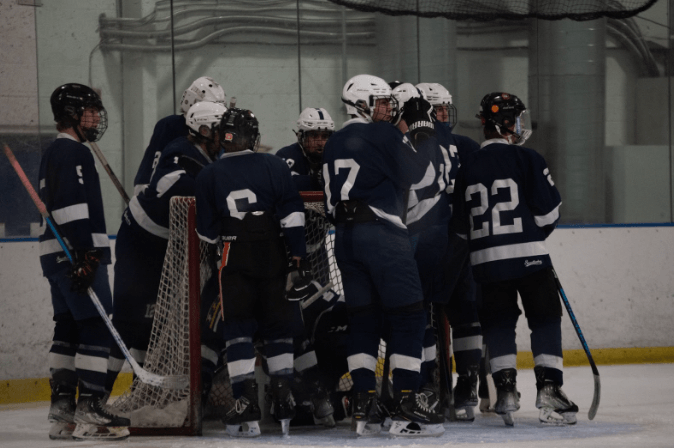Vivian Jiang ’27 | Karen Shi ’27
The question of whether or not to implement multiple special occasion sports days has become an increasingly popular discussion within the EA community. One of the most highly anticipated events of the school year, AIS-Haverford Day serves as not only a display of athletic prowess but also an opportunity for school-wide unity. Yet, this festivity is fall-exclusive, omitting sports in the winter and spring such as swimming, basketball, track, squash, lacrosse, and softball.
The topic invites different points of view and even recently reached the Junto Debate Club. For students, AIS-Haverford Day acts as a catalyst for memorable experiences and team spirit, both among those who have been hard at work preparing for this annual event and the energetic audience cheering them on.
Danity Pike ’27 shares, “I very much enjoyed [AIS-Haverford Day] because it made me feel a part of the community and more connected to EA.” An actor in the fall play, Pike felt that although she was not actively on the field, the competitive spirit and school pride touched her all the same. Additionally, Sarah Taylor ’24 observes, “Sports days make all the students really energetic and competitive, the campus generally seems happier around that time.” A timeless school tradition, AIS Haverford Day’s competitive spirit has undoubtedly left a mark on the community as a whole through its invitation of joy through school-wide unity and collaboration.

Photo courtesy of Gracie O’Neill ’24
In fact, friendly competition and a common goal are driving forces for fostering new connections and social opportunities within the community. According to squash and rowing coach David Mercante, “People develop their own circle of friends, their own cliques, and there’s nothing necessarily wrong with that. But it takes having a common opponent sometimes to really help people find their common ground and unite as a school.”
Mercante’s words are true for cross country runner and AIS-Haverford Day competitor, Darcy Mackenzie ’27 who expressed, “It’s gotten me to make friends on my team that I wasn’t close with even when just playing the sport. I feel like it gets you to new bonds that you can’t get by just playing normal games and just doing the sport normally with your team.” She, like many others, hopes to extend this team experience to sports taking place later in the year.
While most students reach a consensus on the benefits of this sporting event, mixed opinions on the implementation of many arise from the debate of oversaturation and tradition versus representation. Danity explains, “I honestly think having it in the fall makes it more special. Because, in the winter, you have winter break and the holidays, and in the spring you have May Term, but in the fall, it’s almost dreary. AIS-Haverford Day just gives students something to be hyped about.”
Moreover, having participated in this year’s events as a runner, William Patterson ’27 also wonders if having three seasons of special competitions with those two rival schools would dilute the meaning of the original day in the fall. “It could make the age-old tradition of the celebration seem less significant,” says Patterson.

Photo courtesy of Gracie O’Neill ’24
When it comes to representation of the other sports, he suggested that while other sports are downplayed throughout the year, it is not due to the absence of a special competition day, but rather the popularity of the sports themselves in comparison to fall sports such as football. Agreeing with this sentiment, Mercante added that three spirit weeks a year would likely take away the excitement and novelty associated with them, because “it might start to get a little repetitive, since, by the time you graduate, you would have gone through 12 spirit weeks.”
On the other hand, swimmer Ivie Enakhimion ’26 explains, “I feel like the people participating in it feel a sense of team camaraderie. If you had that for every team, it would bring them together.” Further, Mackenzie shares that this topic has become a discussion within the squash team. “We’ve been really bummed out that we haven’t been able to have a day like that. We wanted to paint our faces and do all this stuff, but we haven’t got a reason to do so.” The unfortunate reality of a single AIS-Haverford day is the exclusion of two-thirds of the sports offered at EA, which reduces opportunities for similar experiences on such a great scale.
Above all, the representation and uplifting of all athletes remain the community’s primary interest. Maeve Martinelli ’27 asserts, “Especially for seniors whose main sports are in either spring or winter, they deserve a special celebration.” However, in addition to concerns about the special essence of the event’s traditions, students understand the gravity of organizing such a large event multiple times a year as well as complications regarding the weather in more inclement seasons. At the end of the day, it is our duty as a community to equally uplift all sports, regardless of a dedicated event; after all, the spirit of AIS-Haverford Day thrives on the collective support of our athletes, students, and faculty.